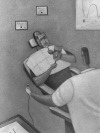Abstract
The authors describe a prospective research design in which actors serve as surrogate patients; this approach can be used to study health care delivery in providers' private offices. A previously published study -- in which an actor with actual dental pathology played the roles of a heterosexual, a homosexual, and an intravenous drug user to learn how dentists would respond to a new patient who appeared to belong to a group at hgh risk for AIDS -- offers an example of the design methodology. The authors discuss the benefits and limitations of the design and note that the behavior of other health care practitioners can be examined using simulated patients. Using carefully selected and trained professional actors rather than untrained patients or students can increase the reliability of findings and protect the rigor of the research.
Full text
PDF
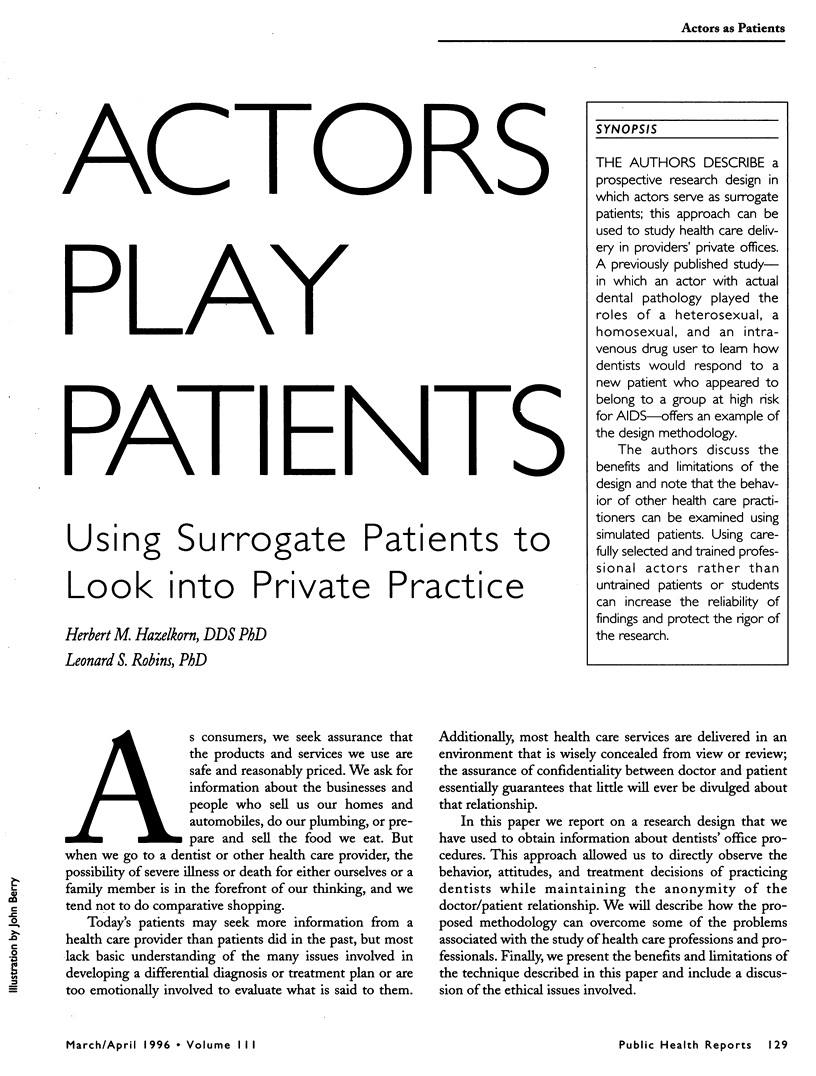
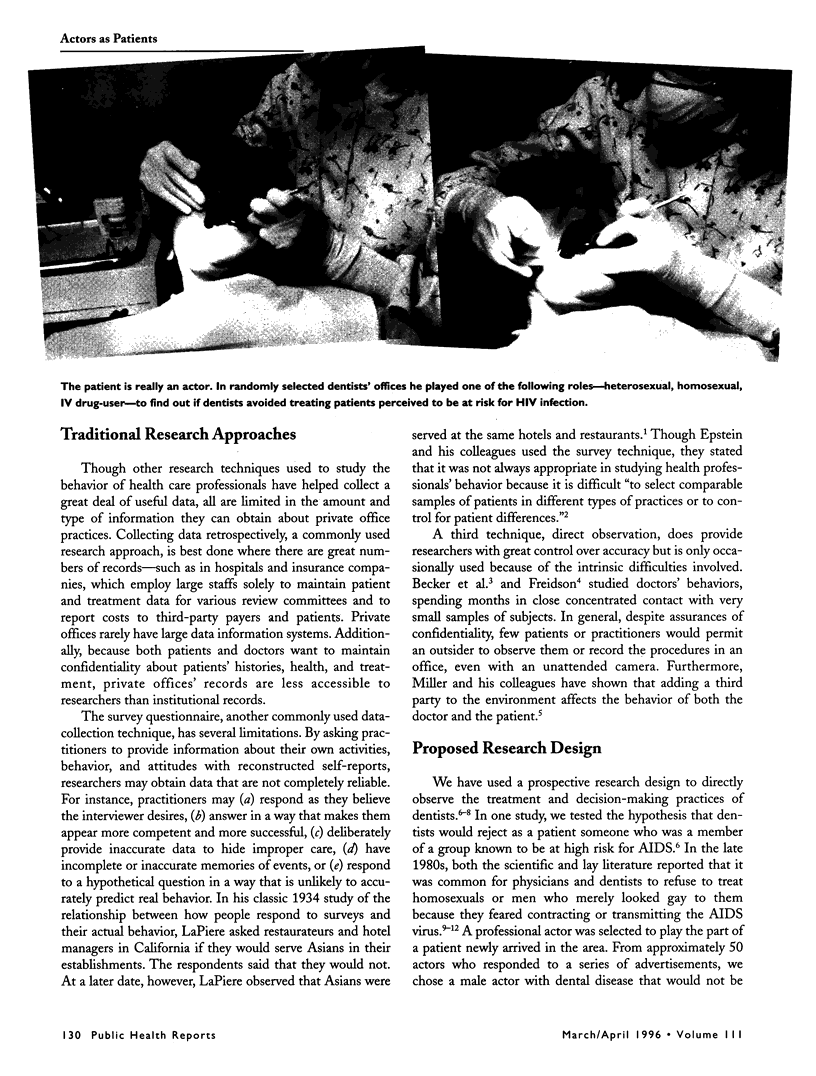
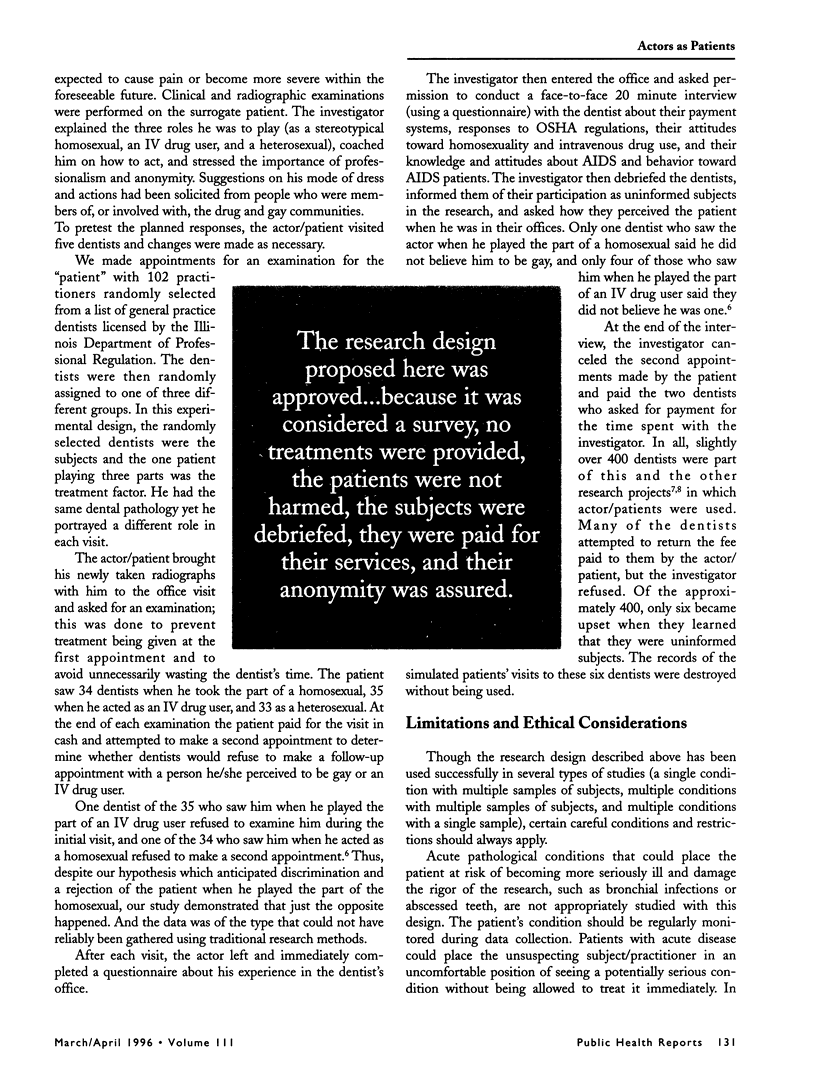
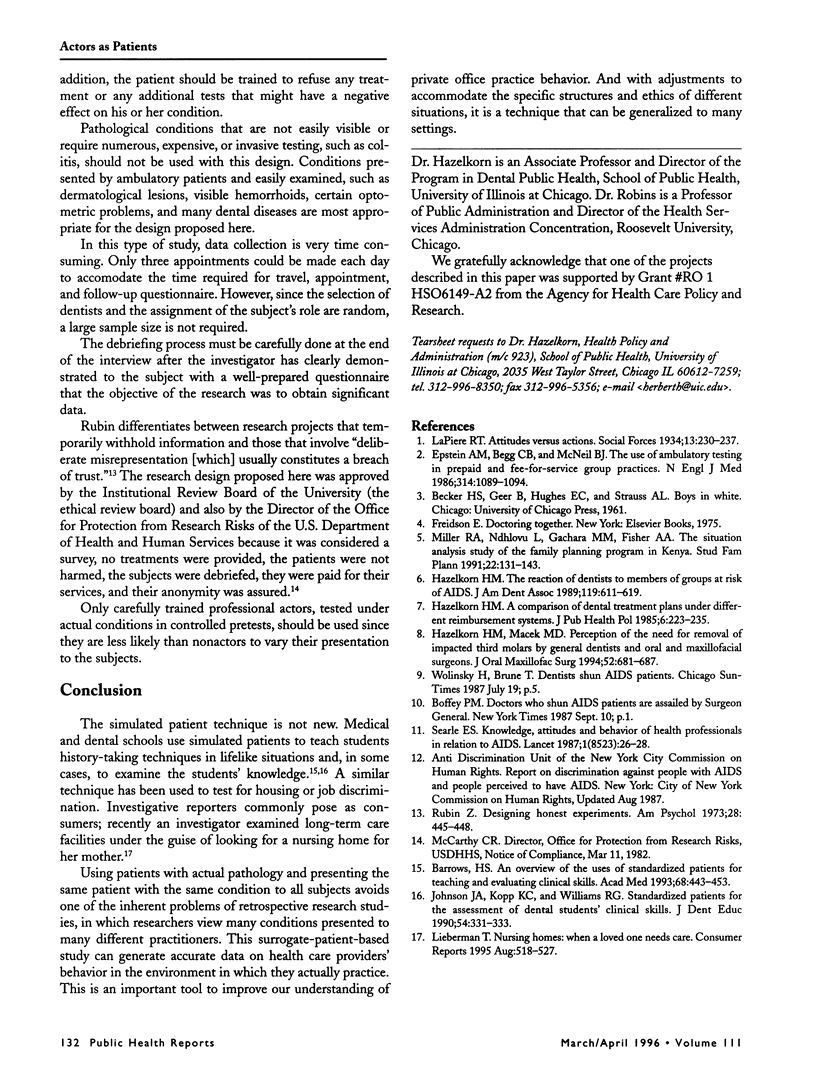
Images in this article
Selected References
These references are in PubMed. This may not be the complete list of references from this article.
- Barrows H. S. An overview of the uses of standardized patients for teaching and evaluating clinical skills. AAMC. Acad Med. 1993 Jun;68(6):443–453. doi: 10.1097/00001888-199306000-00002. [DOI] [PubMed] [Google Scholar]
- Epstein A. M., Begg C. B., McNeil B. J. The use of ambulatory testing in prepaid and fee-for-service group practices. Relation to perceived profitability. N Engl J Med. 1986 Apr 24;314(17):1089–1094. doi: 10.1056/NEJM198604243141706. [DOI] [PubMed] [Google Scholar]
- Hazelkorn H. M. A comparison of dental treatment plans under different reimbursement systems. J Public Health Policy. 1985 Jun;6(2):223–235. [PubMed] [Google Scholar]
- Hazelkorn H. M., Macek M. D. Perception of the need for removal of impacted third molars by general dentists and oral and maxillofacial surgeons. J Oral Maxillofac Surg. 1994 Jul;52(7):681–687. doi: 10.1016/0278-2391(94)90478-2. [DOI] [PubMed] [Google Scholar]
- Hazelkorn H. M. The reaction of dentists to members of groups at risk of AIDS. J Am Dent Assoc. 1989 Nov;119(5):611–619. doi: 10.1016/s0002-8177(89)95013-7. [DOI] [PubMed] [Google Scholar]
- Johnson J. A., Kopp K. C., Williams R. G. Standardized patients for the assessment of dental students' clinical skills. J Dent Educ. 1990 Jun;54(6):331–333. [PubMed] [Google Scholar]
- Miller R. A., Ndhlovu L., Gachara M. M., Fisher A. A. The Situation Analysis Study of the family planning program in Kenya. Stud Fam Plann. 1991 May-Jun;22(3):131–143. [PubMed] [Google Scholar]
- Searle E. S. Knowledge, attitudes, and behaviour of health professionals in relation to AIDS. Lancet. 1987 Jan 3;1(8523):26–28. doi: 10.1016/s0140-6736(87)90711-2. [DOI] [PubMed] [Google Scholar]



